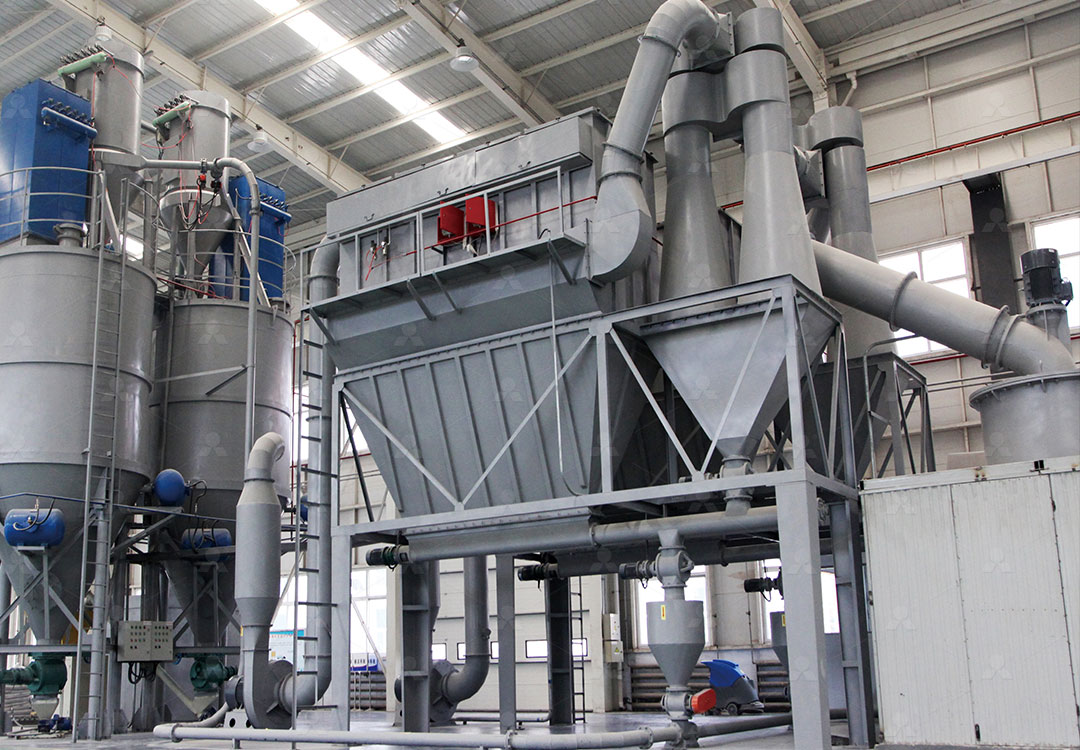Key Applications of Quartz Powder in Semiconductor Manufacturing Processes
We provide a wide range of mills — including Raymond mill, trapezoidal mill, vertical mill, ultrafine mill, and ball mill, obtained ISO9001 international quality certification, EU CE certification, and Customs Union CU-TR certification. Suitable for processing minerals such as limestone, phosphate, quicklime, kaolin, talc, barite, bentonite, calcium carbonate, dolomite, coal, gypsum, clay, carbon black, slag, cement raw materials, cement clinker, and more.
The discharge range of these mills can be adjusted to meet specific processing needs, typically from 80-400 mesh, 600-3250 mesh, and can achieve the finest particle size of up to 6000 mesh(D50).
If you are looking for a reliable grinding solution to turn stone or minerals into fine powder, please feel free to contact our online customer service.
Key Applications of Quartz Powder in Semiconductor Manufacturing Processes
In the highly precise world of semiconductor manufacturing, material purity and consistency are not just desirable—they are absolutly essential. Quartz powder, derived from high-purity quartz ore, plays a pivotal role in several critical stages of the chip fabrication process. Its unique properties, including exceptional thermal stability, high chemical purity, and excellent electrical insulation, make it an indispensable material for producing the advanced integrated circuits that power modern technology.
Critical Roles in Fabrication
The journey of a silicon wafer through a fab is a complex dance of deposition, etching, and patterning. Quartz powder is a key player in this process. One of its primary applications is in the production of crucibles used for growing single-crystal silicon ingots via the Czochralski process. These quartz crucibles must withstand extreme temperatures (over 1400°C) without introducing impurities that could compromise the crystal structure and, ultimately, the electrical performance of the wafer.
![]()
Furthermore, ultra-fine quartz powder is a fundamental component in chemical mechanical planarization (CMP) slurries. In this critical step, the wafer surface is polished to a flawless, atomic-level flatness. The quartz particles in the slurry act as an abrasive, meticulously removing excess material to create the perfectly smooth layers necessary for building up nanoscale transistor structures. The particle size distribution and shape of the quartz powder are paramount here; any inconsistency can lead to microscopic scratches, rendering the entire wafer useless.
The Imperative of Precision Grinding
This is where the quality of the grinding equipment becomes the bottleneck for quality. Standard milling techniques often introduce metallic contamination from wear parts or fail to achieve the narrow particle size distribution required. For semiconductor-grade quartz powder, the tolerances are incredibly tight, often requiring a d97 of less than 5 micrometers with absolutely no metallic contamination.
Our MW Ultrafine Grinding Mill is engineered specifically to meet these stringent demands. With an input size of 0-20 mm and a capacity ranging from 0.5 to 25 tph, it is perfectly suited for processing high-purity quartz. A key feature for semiconductor applications is its “No Rolling Bearing & Screw in Grinding Chamber” design. This eliminates a primary source of metallic contamination, ensuring the final quartz powder is not compromised by iron or other metals from the mill itself.

Moreover, its Adjustable Fineness Between 325-2500 meshes and advanced German cage-type powder selector technology allow for precise control over the final product’s particle size. This ensures the consistent, fine powder needed for CMP slurries and other high-tech applications. The integrated efficient pulse dust collector also guarantees that the entire production process is clean and eco-friendly, preventing any cross-contamination.
Beyond the Fab: Other Essential Uses
The applications extend beyond the wafer itself. High-purity quartz powder is also used to manufacture the quartz glass components that are ubiquitous inside the fabrication equipment. This includes diffusion tubes, bell jars, and wafer boats that hold the silicon wafers during high-temperature processes. These components must have nearly identical thermal expansion properties to the silicon wafers to prevent warping and must not outgas any contaminants into the pristine furnace environment.
![]()
For operations requiring a different throughput or a vertical footprint, our LUM Ultrafine Vertical Grinding Mill presents another excellent solution. It integrates the latest grinding roller and powder separating technology, offering high yielding rates and superior energy efficiency. Its reversible structure allows for easier maintenance and quick replacement of parts, minimizing downtime—a critical factor in continuous production environments.
Conclusion
In conclusion, the unassuming quartz powder is a foundational material that enables the precision and purity demanded by the semiconductor industry. Its role in crystal growth, planarization, and equipment manufacturing is irreplaceable. The ability to produce this material to the required specifications hinges on advanced grinding technology that prioritizes purity, precision, and consistency. Investing in the right milling equipment, such as our MW and LUM series mills, is not just an operational decision; it is a strategic one that directly impacts the quality and yield of the most advanced semiconductor devices in the world.
